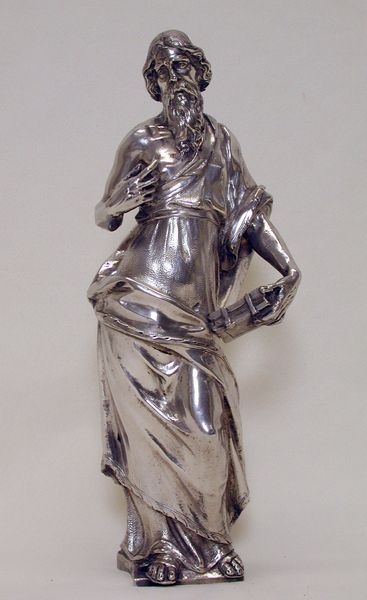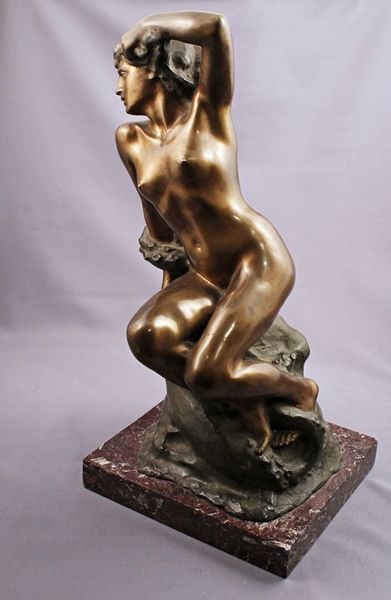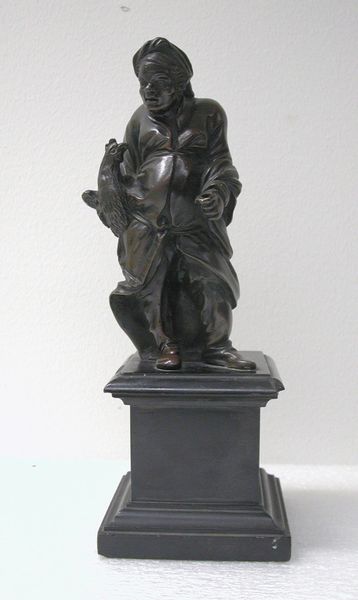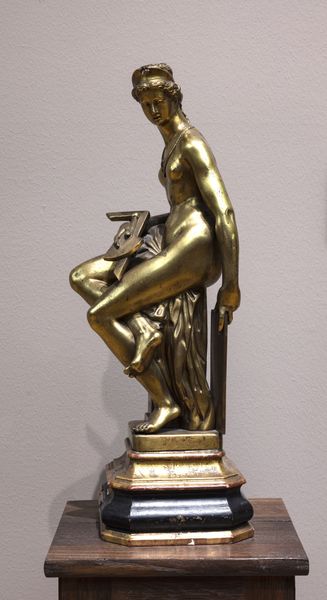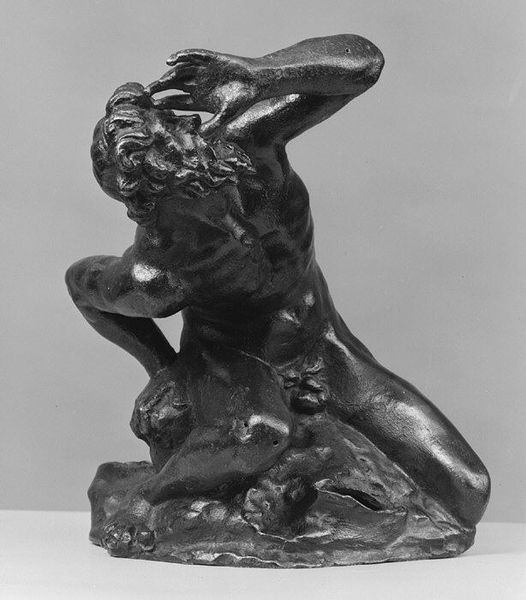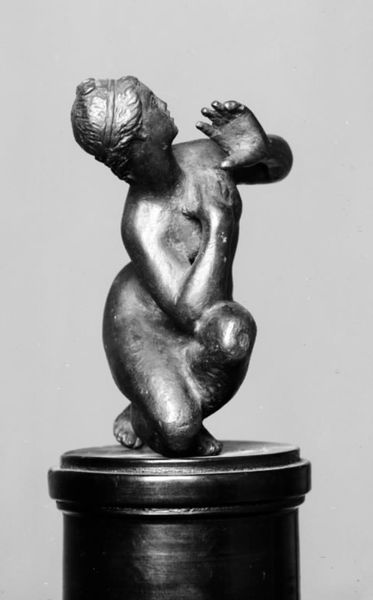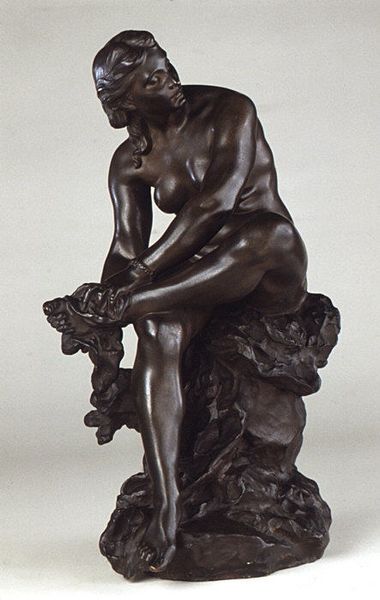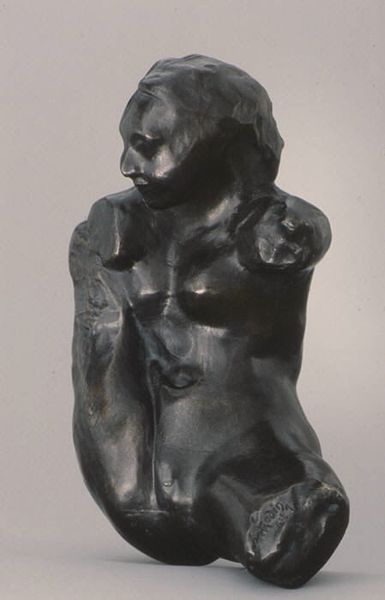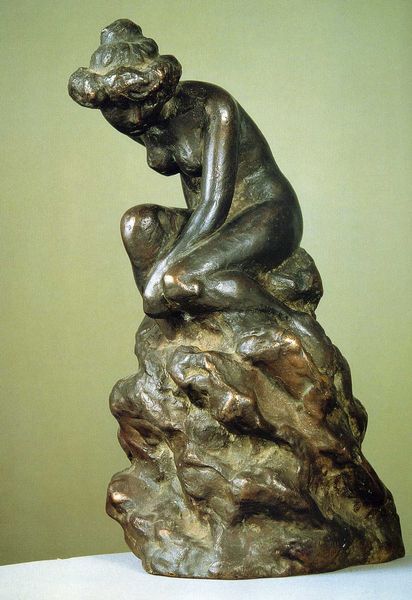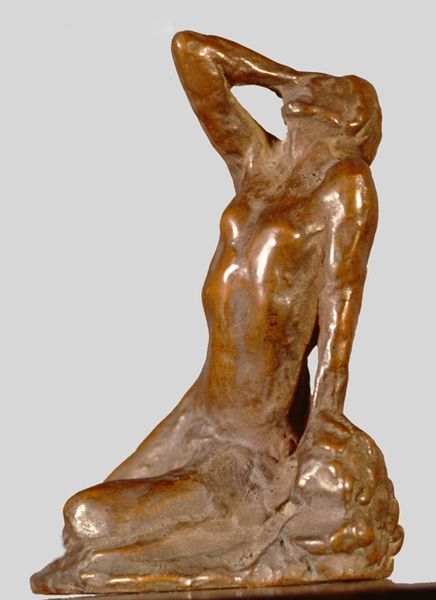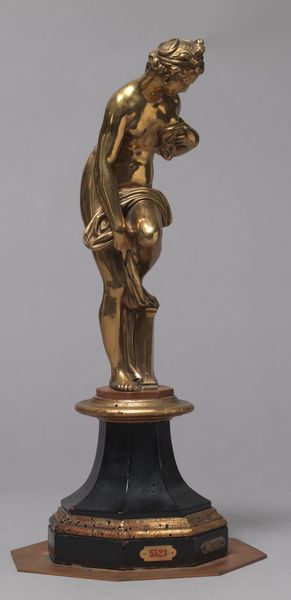
bronze, sculpture
#
portrait
#
sculpture
#
bronze
#
mannerism
#
female-nude
#
sculpture
#
history-painting
#
decorative-art
Dimensions: H. 9-7/8 in. (25.1 cm.)
Copyright: Public Domain
Curator: I'm immediately drawn to the way the light plays on the bronze. There’s almost a liquid quality to it, especially highlighting the smoothness of Venus' skin. Editor: Indeed. This bronze sculpture, "Venus Anadyomene" by Barthélemy Prieur, created between 1600 and 1615, is a stunning example of Mannerist ideals. Notice how the artist uses the classical subject matter—Venus rising from the sea—to explore dynamic and stylized forms, prioritizing elegance and poise. Curator: Absolutely. And thinking about the material, bronze, tells us so much about the societal status. It speaks volumes about production; who owned the mines, smelted the ore, who would have crafted this work, and, ultimately, who the patron was. The bronze signifies wealth and patronage; a deliberate decision was made during the creation, given the alternatives. Editor: That's an important consideration. The spiraling pose, the elongated limbs, the very deliberate contrapposto all create a sense of elevated artifice rather than naturalism. Consider the contrast to, say, a Renaissance Venus. Curator: The almost serpentine curves echo Mannerist painting. Though seemingly focused on the aesthetic and mythological representation of beauty, for the artist, it would also have been important who they were selling this beauty to, whether to advance their careers or secure certain advantages. Editor: Precisely. It's a captivating piece that uses established mythological symbols, with an undercurrent of what its value was and to whom. Curator: A powerful dialogue between form and material. Editor: A telling tale of beauty, materiality and process.
Comments
No comments
Be the first to comment and join the conversation on the ultimate creative platform.

